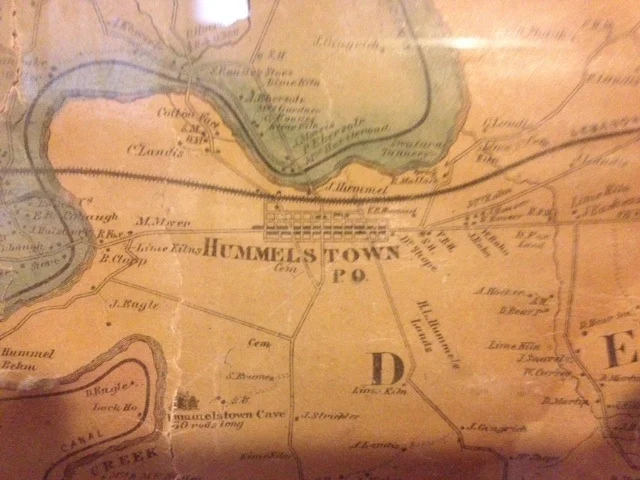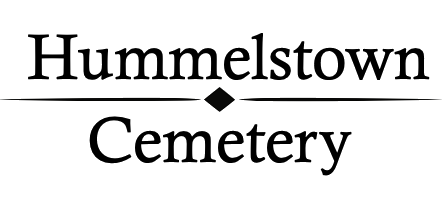Hummelstown Cemetery History
The cemetery was formally dedicated on June 3, 1859, featuring addresses by two German Reformed Church ministers, one who spoke in German and one in English. According to a newspaper account, the ministers “spoke in eloquent terms on the Biblical history of God’s Acre, or graveyards, the honor due to the body after the spirit is fled, and the fact that the Church only and not the world can take proper care of the Cemetery”. The German Reformed congregation had no graveyard of its own, nor did the original Grace Methodist on North Hanover Street, as did the early Lutheran Church and the United Brethren Church (now Trinity United Methodist). Of course, none of our local, individual churches could bear the responsibility and cost of staffing and administering a large and growing cemetery. In November, 1860, the Hummelstown Cemetery Association was formed to independently maintain and manage the grounds, relying solely on private funding. This provides a community-wide, any-church resting place, rather than burdening a few churches.
1862 Map of Hummelstown and vicinity
Records in the Dauphin County Court House revealed that George Bower owned the original 4-acre field and orchard, which he sold to John Greiner in 1837. Five years later Greiner conveyed it to Benneville Klopp, who sold it to John Yingst in 1858, but not before they drew up a formal agreement conveying the acreage to the Trustess of the German Reformed Church. This paper included a provision that Klopp and Yingst be reimbursed for all costs associated with purchasing and laying out the ground during their ownership. Research indicates that this agreement formalized the existence of this ground as the German Reformed graveyard even before 1858. Within the northeast corner of the cemetery, which the iron fence now partially surrounds, are 211 graves predating the formal 1859 dedication. Fifty of these gravestones were removed from other places, leaving 161 stones dating from as early as 1820, but mostly from the 1840’s and 50’s. Most of the names on these early graves are of families from the Reformed congregation. In addition to Klopp and Yingst, you will find names like Rhan, Strickler, Rhoads, Lutz, Heffelfingers, and Nissley … many of whose descendants still live in the area today. You will find no humorous epitaphs on these early graves, like a few which did appear on some elsewhere such as - “I told you I was sick” and “Here lies Johnny Yeast - Pardon me for not rising.” For most people at that time, religious sanctity and the rigors of life demanded a more serous approach to life and death. This was the period during which the German Reformed congregation was getting organized as a separate group. That church, now the Hummelstown United Church of Christ, had worshipped with the Lutherans for many years in a log structure which burned in 1817. A two-story limestone church eventually replaced it and was known as the Old Lutheran Church, where the Lutherans worshipped until the construction of their present brownstone church close-by. The old church is now the museum of the Hummelstown Area Historical Society.
It is difficult for us, familiar with the community as we know it today, to picture the open land which surrounded our small village at that time. Dwellings huddled along Main Street expanding east and west from the square. The cemetery site and much of the surrounding land was in Derry Township. The Bridge Church’s Community center (The Rail) at the corner of South Railroad and South Hanover, was formerly the home of the Church of the Brethren (build in 1886) and at that time part of Spring Creek Church in Hershey. The original frame church was moved in 1932 from what is now The Rail’s parking lot to its present location to make room for more graves. The present brick edifice was built in 1951.
The cemetery did not become part of the borough until 1952. It was then annexed along much of the surrounding land including the Book farm (now the site of Lower Dauphin High School) and the Brethren Church proper. Council perhaps felt that the cemetery’s tax-exempt status provided no advantage in annexing it before that time. The tract to the west side of the new area became the Elmcrest development (streets named Willow, Redwood, Dogwood, Linden, etc.). Remember, the borough was not incorporated until 1874, quite a few years after the first burials in the original cemetery.
[For more Hummelstown historical information, we encourage you to contact the Hummelstown Area Historical Society at www.hummelstownhistoricalsociety.org. They are eager and capable to help you find what you are looking for.]


